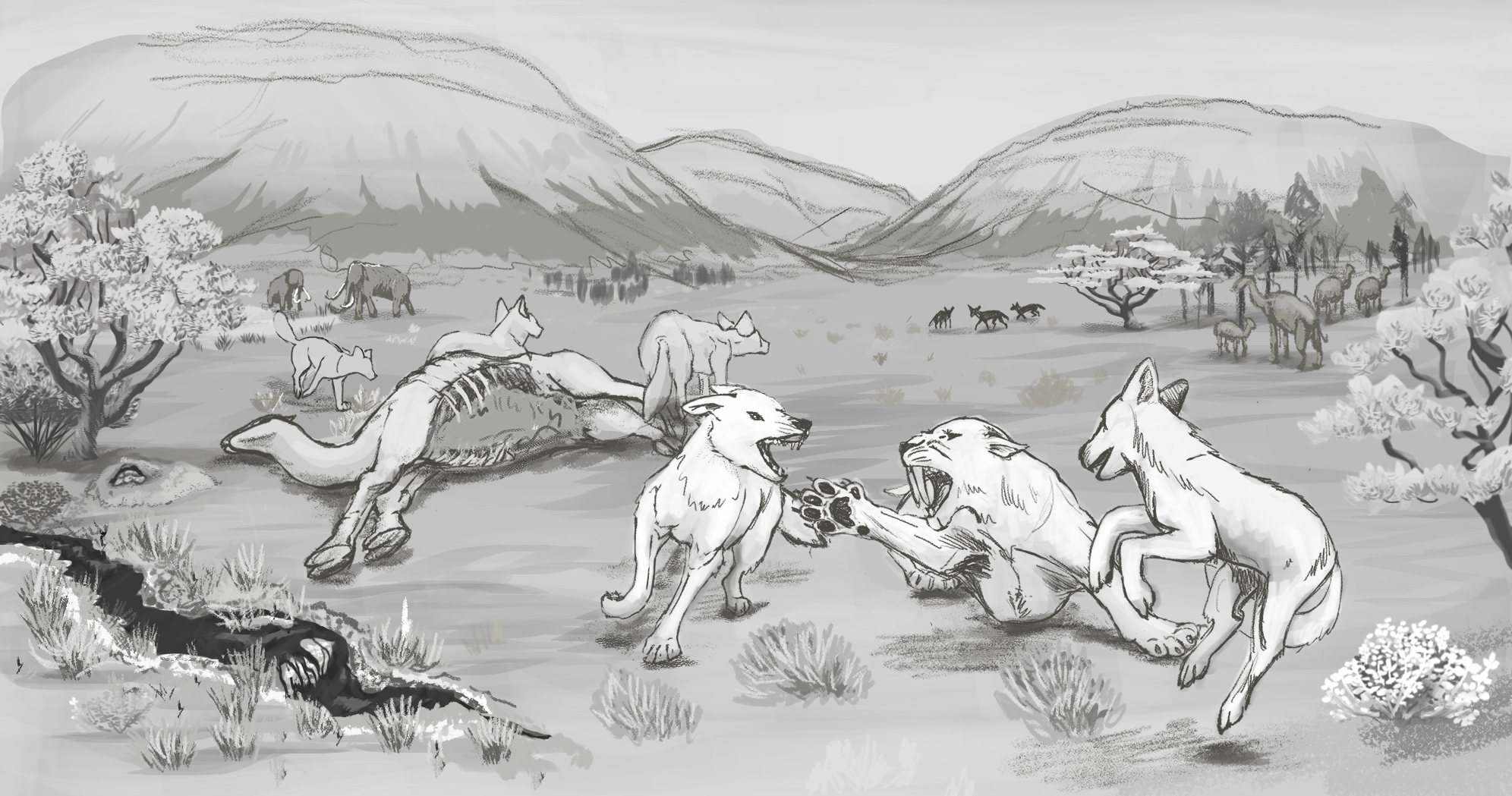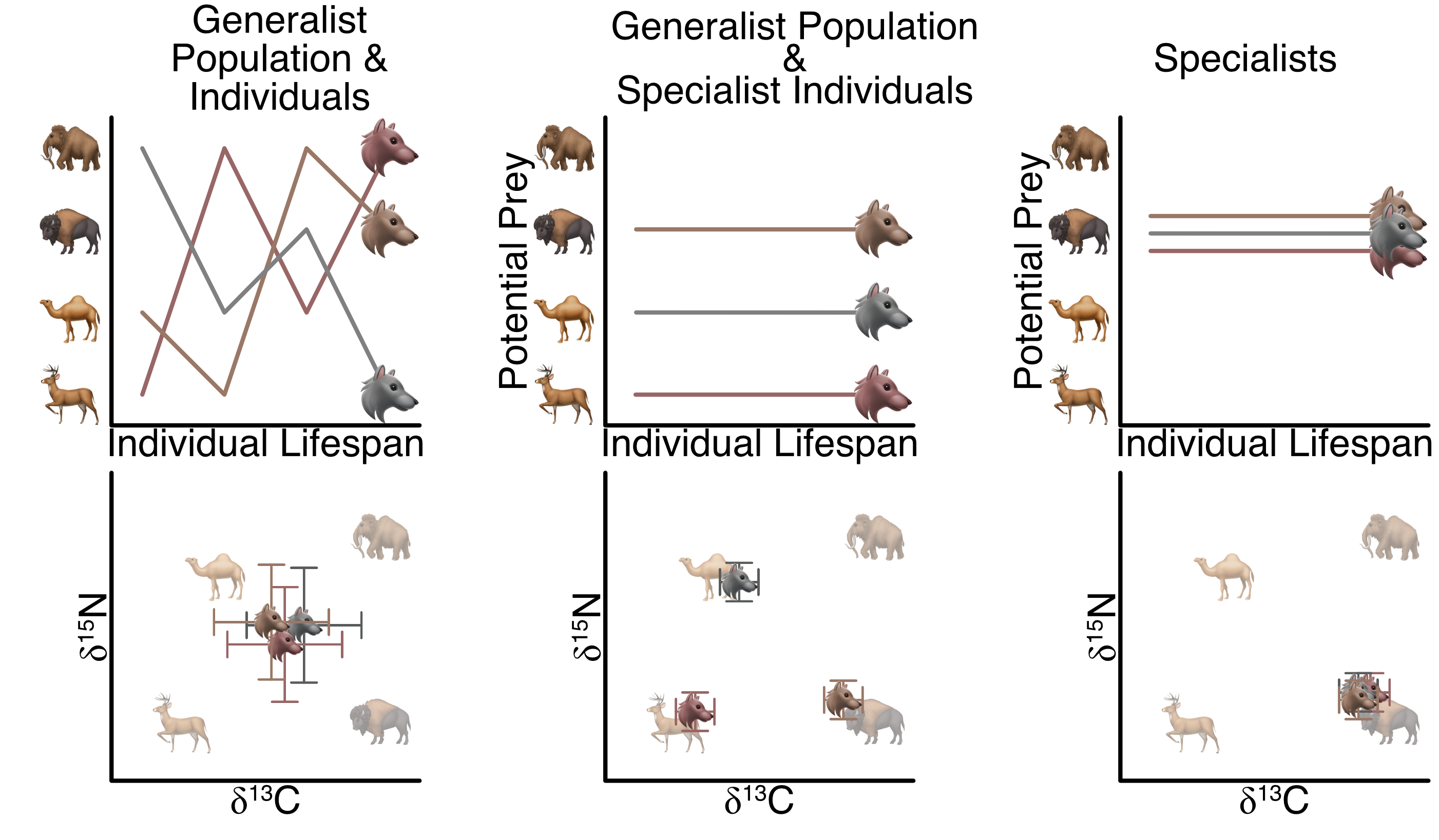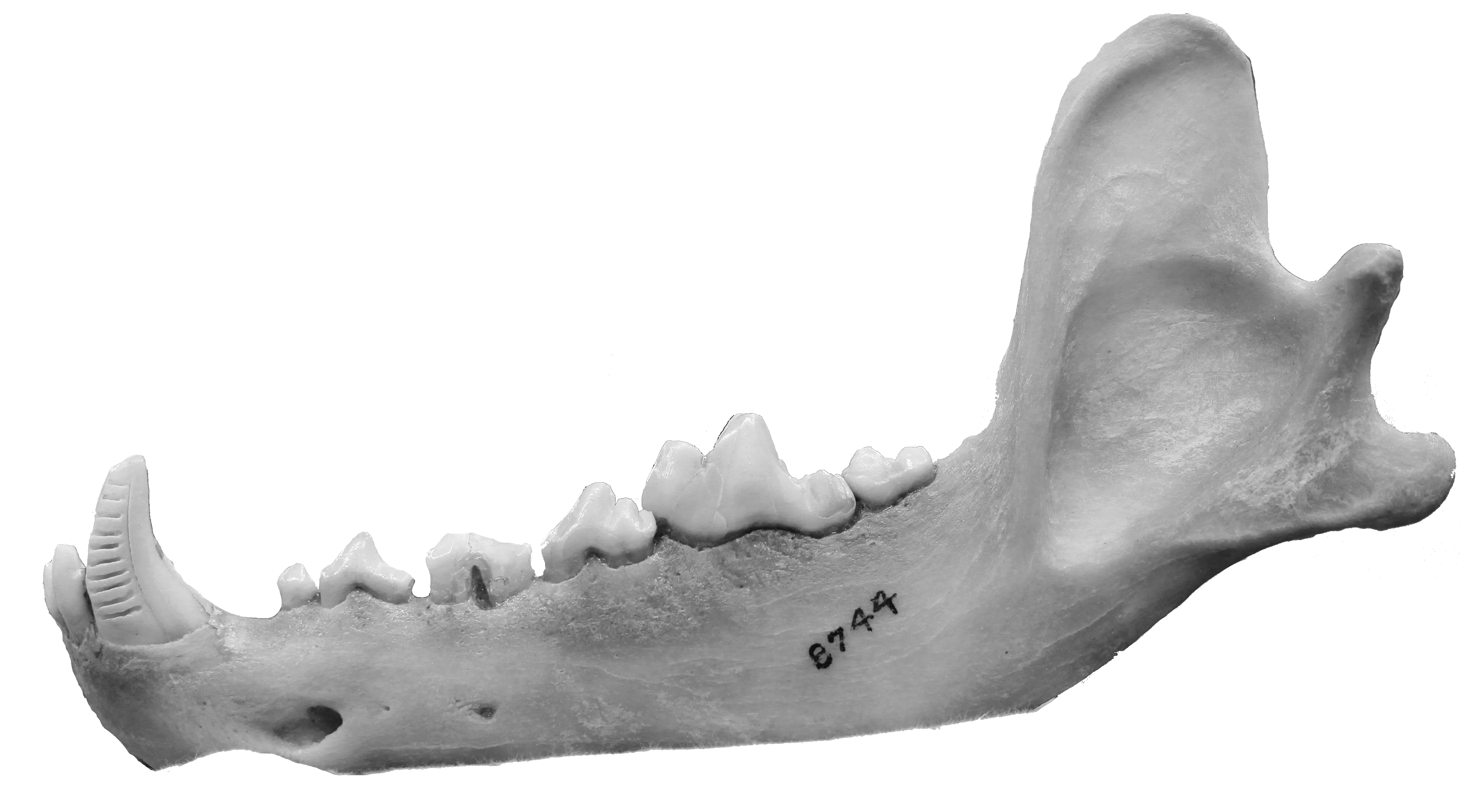
Stable Isotope Ecology
My research aims to use the stable isotope composition of various tissues (tooth enamel, bone collagen, hair, etc.) to investigate the ecology of modern and fossil animals as well as their environments. I’ve previously worked on a variety of fossil mammals from the Pleistocene and Miocene and Currently I’m interested in how predators respond to external forces, and how this shapes ecosystems. In particular I’m working to understand the dynamics of within and between group competition manifests in modern sharks and grey wolves.

Conceptual diagram of different generalist-to-specialist dietary strategies for predators and the isotopic expression of these differences.
Predators play a complex role in modern ecosystems and vestiges of past ecological dynamics may influence their response to ongoing climate change. Given this how does resource availability and competition shape the ecological role of predators? Generalists are usually thought to me more resilient to environmental change but some generalist populations can be made up of specialist individuals.

Grey wolf mandible where the canine has been sampled for stable isotope analysis.
I tackle these questions using stable isotope analysis to investigate niche dynamics at the individual and population level. In mammals I subsample carnivore teeth to estimate individual niche size, while in sharks my collaborators and I analyze multiple teeth from individual sharks.